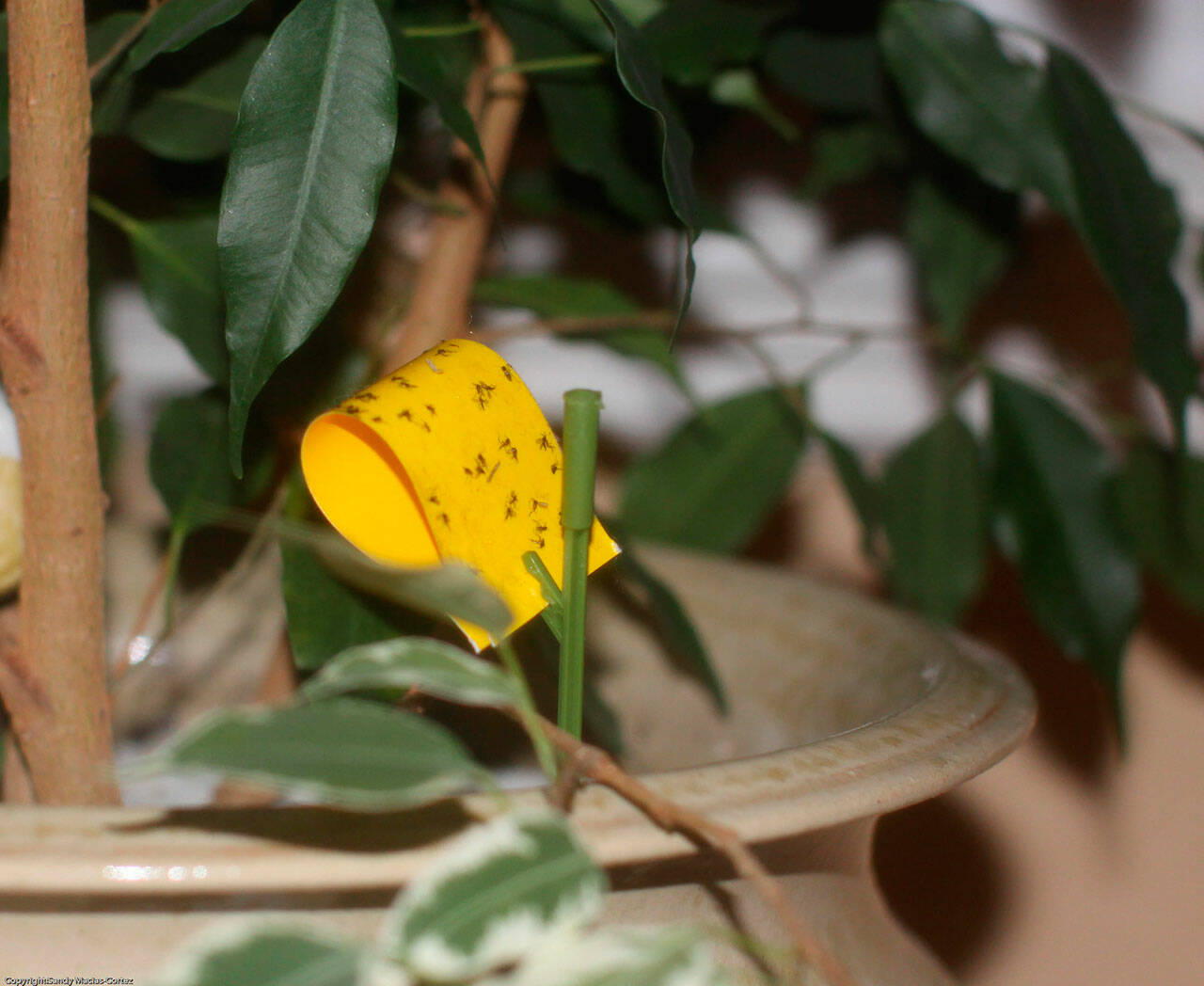Fungus gnats thrive in wet, humid conditions and they are extremely vexing. Not to be confused with their equally annoying cousin, the fruit fly, fungus gnats are about 1/8 inch long and live in the moist soil of your indoor or greenhouse plants.
They feed on decaying organic matter and the larvae will feed on young roots. Although these nuisance gnats don’t usually cause significant problems, if left to breed they can damage young plants and seedlings.
The life cycle of the fungus gnat is 21-40 days depending on the temperature. They lay hundreds of eggs on top of the soil so a few gnats can quickly become a problem. The first defense against fungus gnats is prevention, followed by cultural and biological control.
To avoid getting fungus gnats, quarantine any new plants that are being introduced into a home or greenhouse. Any plants suspected of having gnats should be thrown out or carefully repotted. The best potting or seed starting medium is a clean soil-less mix with excellent drainage.
If fungus gnats are suspected, place yellow sticky traps in affected areas. Traps will not only attract and kill the adult gnats, they will indicate the severity of the problem. Warning, a few fungus gnats can very quickly become many fungus gnats. Success in controlling them is better if started before they become an infestation.
Keep plants clean and free of any old plant debris. It’s important not to over-water plants, and to let the top one to two inches of the soil dry out between waterings when possible. A water meter that helps determine when to water is a good tool if over-watering is a chronic problem. Adding a fan to move the air and reduce excess humidity can help.
For houseplants strict water control, hygiene and cultural controls like adding a 1/2-inch deep layer of sharp sand or fine grit to cover the soil will help stop the fungus gnat cycle. For immediate results, yellow sticky traps will also kill adult flies. Currently WSU does not recommend chemical control for houseplants.
In the greenhouse, practice good hygiene by keeping all pots, flats, benches and drains clean. Remove any weeds or algae growth on a regular basis.
If needed, the next step may be a biological control. Bacillus thuringiensis subspecies israelensis (Bti) is a biological or a naturally occurring bacterium found in soils. It contains spores that produce toxins that specifically target and only affect the larvae of the mosquito, blackfly and fungus gnat. There is no toxicity to human, animal, fish or other non-targeted insects. Bti can be applied at any time as a drench but may need to be applied more than once.
Bti is not to be confused with Bacillus thuringiensis (or just Bt). Although they are a similar type of bacterium, Bt, targets a different type of larva, most notably the gypsy moth.
Beneficial nematodes (Steinernema feltiae, very small, beneficial worms) are also used as a soil drench to control gnat larvae. Like Bti, they are non-toxic. However, nematodes are living organisms and as such, they must be kept alive. Nematodes need to be used quickly and under certain climatic conditions such as soil temperatures between 50-80 degrees.
For the greenhouse, other over-the-counter (OTC) products that contain horticultural oils and/or pyrethrums can be effective, in reducing the adult population. Although these products are listed as safe or even OMRI (Organic Materials Review Institute) organic, it is essential to read and follow the directions for proper use.
Newer products that contain other natural substances are becoming available. Currently, WSU does not have approved product recommendations but it may be worth researching. Again, it’s important to only buy products labeled for the particular pest/location you are dealing with.
For more information, go to pubs.extension.wsu and search for “EB1573E,” or type in “fungus gnat.”
Susan Kalmar is a WSU Clallam County Master Gardener.


